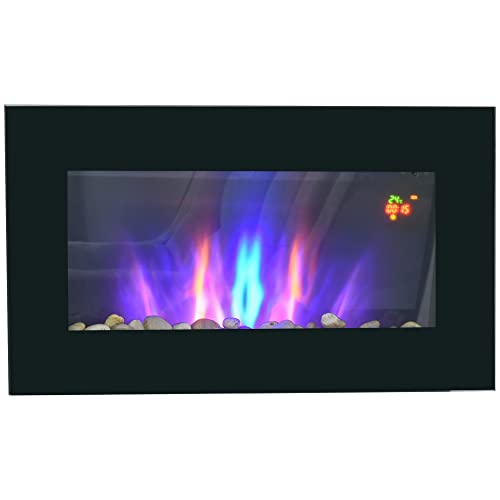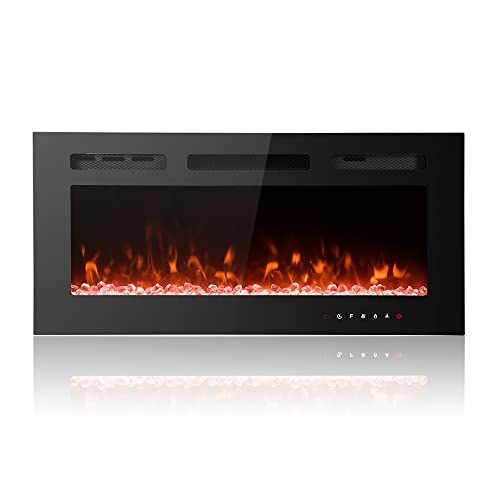The 9 Things Your Parents Taught You About Wood Burning Stove For Shed
페이지 정보
작성자 Trent Deaton 작성일25-01-28 03:52 조회3회 댓글0건관련링크
본문
 Installing a Wood Burning Stove For a Shed
Installing a Wood Burning Stove For a Shed A wood burning stove for sheds is an ideal choice for those looking to add a little homely charm to their garden retreat. Be aware that any DEFRA-exempt shed log burner needs to be located within a smoke control area and the flue pipe properly shielded.
A wood burning stove for sheds is an ideal choice for those looking to add a little homely charm to their garden retreat. Be aware that any DEFRA-exempt shed log burner needs to be located within a smoke control area and the flue pipe properly shielded.For fire safety for fire safety, you'll also need to install non-combustible materials on the walls in front of and behind the stove.
Size
Wood burning stoves for sheds are great additions to. They not only provide efficient heating, but also add a rustic look to the area, which creates warmth and atmosphere. But, before you decide on a stove for Wood Burning Stove For Shed your shed or any other off grid dwelling like a shepherd hut or yurt, or an earthship, container home, it is important to be aware of the regulations and safety rules.
One of the most important aspects to consider when buying log burners for a shed or log cabin is the size. It can be tempting to purchase a larger stove than is required for the space, but this can cause poor performance and even overheating. To avoid this, we suggest using our KW Calculator to figure the required output for your space and then adding a few extra KW to be safe.
Luckily, there are plenty of small log burners available that are perfect for log cabins and sheds. Take the Charnwood Country 4 for example; this model has beautiful country-inspired designs that would suit any type of shed or log cabin, while it boasts an output of up to 4.8kW. This model is Ecodesign-ready, which means it is efficient in burning and creates little air pollution. It also comes with a huge viewing area and a multi-fuel grate so you can burn wood and smokeless fuel.
The Saltfire Peanut stove is another great alternative. It comes in a variety of colors and can generate heat up to 4.7kW. This model requires more space away from combustibles - 550mm on the sides and back - but this can be reduced to 100mm using shielding. It also has a large viewing area, making it a great option for any shed or log cabin.
To ensure compliance with local regulations, you may need to put in non-combustible material around the stove or flue pipe depending on the size and style of your shed. This is particularly important when your shed is constructed from any kind of wood, which should be kept at least 200mm from the stove in order to prevent fires. If your shed was constructed from another material, it is recommended to consult with an expert installer to ensure that the right insulation measures are in place.
Installation
A corner wood burning stove stove for your shed is a great option to keep your garden warm and cozy during the winter months. If you plan to add a cast iron wood burner burner to your shed, be sure that it is properly installed. This will safeguard your shed against fire damage and ensure that the stove meets building regulations and safety standard. In addition, to ensure that the space around the stove is free of flammable materials, you must ensure that the shed has adequate ventilation. Without proper ventilation the shed could become dangerous due to the accumulation of carbon monoxide.
The first step to install the stove in a shed is to measure the space where you wish to install it. Consider the dimensions of the wood stove and any other accessories that may be required. Check the instructions of the manufacturer to determine the safe distance away from flammable materials. You'll also need to consider the insulation levels of the shed because they influence the amount of heat generated by the stove.
Note the location of the opening you'd like to create in the wall of the shed after you've measured it. Use a plumb line to get the correct positions, and be sure to leave enough space between the stove's back and the wall, and between the side walls of the shed and the chimney stack. You will also need to install a heat shield, which shields the wall of the shed from the heat produced by the stove. This comes with the kit and is simply aligned with the hearth plate.
It is also necessary to ensure that the shed has a non-combustible hearth, which is usually constructed from slate or granite, wood burning Stove for shed or concrete. The hearth should be a minimum of 12mm thick and must be at a minimum of 225mm wide at the front and 150mm on both sides as well as the rear. The flue pipe must be shielded, and the safe distance from combustible surfaces must not exceed 200mm.
After you have installed the hearth and stove It is important to wait at least 24 hrs before lighting it up for the first time. This is so that the sealants and mortar will be cured properly.
Ventilation
A wood stove needs oxygen to burn. Without airflow, it could result in a non-burning flame or even carbon monoxide. Vents allow air to circulate around the stove when it is operating, preventing carbon dioxide build-up and encouraging air circulation. A vent should be the same dimensions as the chimney or flue and be close to the stove.
There are many rules that you have to follow, particularly with regards to ventilation, when installing a wood burning stove in an outdoor space. You could face fines in the event that you fail to comply with. To avoid this, you should hire an HETAS-registered installationist to complete your installation and give you a certificate of conformance.
The Building Regulation Approved Document Part J, which governs the installation of chimneys and flues must also be adhered to. This includes the distance the flue pipe can be from combustible materials, corner wood burning stove such as walls and ceilings. The stove and flue should be protected from fire damage by either heat shielding, or an insulation panel.
It is recommended to install an insulated board in the hearth of the shed, and also in front of the flue outlet. This will prevent flue gasses from getting drawn through the walls that are not insulated and causing possible fire damage.
You can also safeguard your home from dampness by positioning it away from potential sources of water. This includes leaky doors or windows, as well as any areas where rainwater might be able to drip onto the stove or chimney pipe.
A dehumidifier will also help to reduce moisture in the air and create a more comfortable environment. It can also keep fungus and mould from forming on the surfaces within your shed, which could affect the performance of the stove and lead to damage.
The type of fuel that you burn in your log stove can also affect its performance. Avoid burning treated wood burning stove for shed, bekker-boyd.federatedjournals.com, off-cuts or particle board. These kinds of materials release toxic chemicals that can damage the flue and stove, and could cause excessive emissions and dangerously high temperatures in the flue gasses. Don't burn garbage like cardboard or tyres. They're bad for the environment and could clog your stove.
Safety
Although it is possible to install a wood-burning stove in a shed, it's important to follow the correct installation guidelines and take proper safety precautions. This includes making sure that your shed is in compliance with the requirements for installing log burners, and also ensuring that your chimney and flue system is in good functioning order. It's also a good idea to ensure that you have the appropriate fire insurance in place.
When you are looking for a shed to install a wood stove first thing you should think about is the construction material. Some sheds, particularly those with a corrugated roof, might not be suitable for installation of log burners due to fire safety concerns. It is also important to note that the use of timber as a building material could be prohibited for this type of project by planning regulations, so make sure to check with your local authorities before you start work.
It is also important to ensure that your shed is properly ventilated. Without it, the combustion process will not be as efficient and could pose the health risk of carbon monoxide build-up. A lack of ventilation can also lead to damp issues and condensation in the shed.
Be sure that the shed is not situated too close to a staircase, as this will cause warmed air to rise up and lose heat as it rises. Likewise, your shed should not be too far away from a window, as this could also cause drafts that can cause stoves to be unable to function, such as the open window detection system.
It's also important to inspect the roof of the shed for watertightness, and to make sure that the flue pipe is sealed. You should hire a professional roofer for the job to ensure it's done to a high standard and in compliance with building and fire regulations. Keep a class A extinguisher inside the shed in the event of a fire or smoke emergency. It is recommended to inspect your shed at least every year to look for signs of wear or damage that requires to be fixed, and ensure that the chimney and flue are cleaned frequently to prevent creosote from accumulating.
Warning: Use of undefined constant php - assumed 'php' (this will throw an Error in a future version of PHP) in /data/www/kacu.hbni.co.kr/dev/skin/board/basic/view.skin.php on line 152
댓글목록
등록된 댓글이 없습니다.

